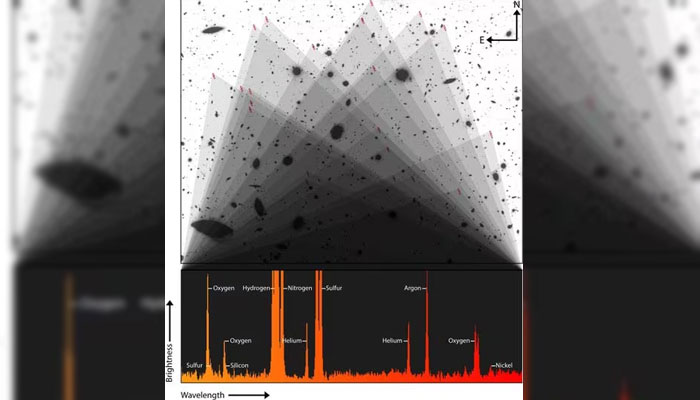James Webb Space Telescope: Which unexpected elements do ‘teenage galaxies’ contain?
Discovered by James Webb Space Telescope, 'galactic teenagers', were formed 2-3 billion years after the Big Bang
November 24, 2023

The James Webb Space Telescope, operational since last year, has not only delved into the universe's infancy but has now focused on adolescent galaxies, offering unprecedented insights into their growth and characteristics.
Termed "galactic teenagers," these galaxies, formed 2-3 billion years after the Big Bang, showcase distinctive features akin to human teenagers, combining growth spurts with a hint of immaturity.
Researchers, led by Professor Allison Strom from Northwestern University, examined data gathered by Webb on light across various wavelengths from 23 galaxies, forming a composite image of their "chemical DNA."
These galaxies, though already having formed a substantial number of stars, exhibit rapid ongoing growth, undergoing crucial processes that shape their future galactic identity.
The study highlighted that these teenage galaxies, while not resembling contemporary galaxies, undergo significant and yet-to-be-understood processes that determine their evolutionary path.
Notably, the temperature in their star-forming regions is markedly higher than observed in present-day galaxies, signifying differences in the star's and gas properties.
The galaxies were observed glowing with eight elements, including oxygen, a crucial component in tracking galactic growth. Unexpectedly, nickel was also detected, suggesting unique characteristics in massive stars influencing gas glow.
Although the study focused on eight elements, astronomers believe more elements remain undetected within these galaxies, providing clues about their star formation history and chemical evolution.
The findings, derived from the CECILIA Survey, showcase the transformative capability of the James Webb Space Telescope, offering intricate details about galaxies in a later phase of the universe's history.
This study, a groundbreaking example, sheds light on the chemical immaturity and rapid formation of these adolescent galaxies, augmenting our understanding of the cosmos.











